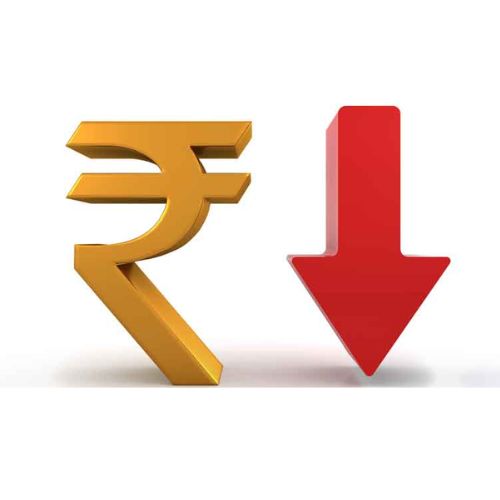The firm has progressed past the arduous pre-seed stage, when the cost of meeting over coffee exceeds the cash raised. At this stage, your heart and soul, as well as a sizable chunk of your personal money account, have been invested in laying the groundwork for your firm.
Assume you are the CEO of a startup.
Knowing how valuable accelerators can be for companies, you and your co-founders decided to join one. Demo-day came and went, and you were the lucky receiver of a substantial term sheet from a well-known venture capital company. Congratulations!
After hammering out the kinks in your business development, the startup is a semi-successful operation with a huge consumer base. In reality, the finance team is certain that they have a monetizable strategy, but the firm need another round of capital to go even further.
This startup was valued at roughly $3 million during the seed-funding stage.This is not unusual; most firms at this point are worth between $1 and $6 million.
In this scenario, your firm has reached the Series A investment stage.
FUNDING FOR SERIES A
A typical Series A financing objective for a firm is between $2 and $15 million dollars. This figure varies depending on the industry. It’s worth noting that the emergence of high-valued tech businesses has boosted the average dollar amount received for a Series A round in recent years, owing to venture investors’ desire not to miss out on the next big thing in the IT industry.
Chaossearch, a Boston-based log-search and analytics platform, was recently funded by investors including.406 Ventures and Glasswing Ventures, as an example of a successful Series A investment in the IT sector.
Chaossearch collected $9 million to allow its development and operational teams to expand the preservation and use of log and event data.
Regardless of the sector, venture capitalist companies and angel investors are the major sources of Series A investment. So, what characteristics do these potential investors want in a firm at this stage?
Growth begins at the seed stage. Investors want to know how far a firm has come since its initial round of investment. A venture has already proven that it has a minimum-viable product at this point.
FUNDING FOR SERIES B
In some aspects, Series B money is similar to Series A funding. Your business will include:
Your principal investors will be venture capitalists.
Consumers with a medium-to-large user base
A feasible product or service concept
Evidence that your organisation can achieve the aims and expectations of your stakeholders
The scope of the endeavour, the quantity of funds raised, and the solidification of serious expectations made by investors are the distinctions between the two rounds of fundraising.
Most Series B investment scenarios anticipate to raise between $10 million and $20 million (depending on the industry). Companies in this round often have a significantly greater valuation than they had when seeking Series A capital since they have established themselves as market leaders.
Remember the advantages and disadvantages your venture presented to investors? This is where you demonstrate that your evaluation was right. The firm must have realistic revenue estimates and demonstrate its ability to do successfully in its sector.
Following this round of investment, you must have a specific strategy in place for your business to break even and begin to generate a net profit.
At this point, common stock is frequently issued. Investors are more likely to trust firms at this level of fundraising since the enterprise has already been strengthened by prior investors, which improves the company’s image in the eyes of other prospective investors.
Typically, the company’s greater valuation at this point means that investors will pay more than they did in Series A.
FUNDING FOR SERIES C
Everyone wants a piece of you, fortunately. Because of its track record and high value, industry experts believe the company is lucrative, and this trust in the business makes even the most risk-averse investors want in.
At this level, investors include industry leaders and institutional investors such as:
Hedged funds
Banks of investment
Firms specialising on private equity
At this point, secondary market organisations will also be interested in purchasing stock from your firm. Previous shareholders will sell their shares on the secondary market. Investment banks will sell securities in the intention of profiting from a rising share price of a firm.
It is difficult to determine how much firms raise on average in this round of investment because most startups never make it to this stage, and it is impossible to compare across industries. GreyOrange, an industrial robotics startup, just secured $140 million in a Series C financing headed by Mithril Capital. That example is on the top end of what a firm may raise in Series C. LendInvest, a UK-based online lending company that received $39.5 million in a Series C round, provides a more concrete example. The exact monetary amount one may raise, like with the previous round of fundraising, depends on the firm and is also industry-specific.
A firm in its final round of external equity financing is most likely preparing for an IPO. The flood of investors frequently raises a company’s valuation, which is obviously advantageous in the run-up to an IPO. Because a company’s valuation is the greatest it has ever been at this stage, most will prefer to proceed with an IPO rather than pursue any more rounds of fundraising.
Remember the advantages and disadvantages your venture presented to investors? This is where you demonstrate that your evaluation was right. The firm must have realistic revenue estimates and demonstrate its ability to do successfully in its sector.
Following this round of investment, you must have a specific strategy in place for your business to break even and begin to generate a net profit.
At this point, common stock is frequently issued. Investors are more likely to trust firms at this level of fundraising since the enterprise has already been strengthened by prior investors, which improves the company’s image in the eyes of other prospective investors.
Typically, the company’s greater valuation at this point means that investors will pay more than they did in Series A.














